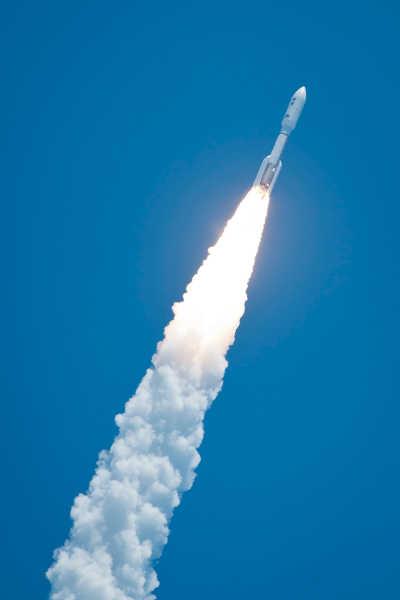- Dauna Coulter
- Posted On
Space News: A freaky fluid inside Jupiter?

Jupiter has a long list of oddities. For one thing, it's enormous, containing 70 percent of our solar system's planetary material, yet it is not like the rocky world beneath our feet.
Jupiter is so gassy, it seems more like a star. Jupiter’s atmosphere brews hurricanes twice as wide as Earth itself, monsters that generate 400 mph winds and lightning 100 times brighter than terrestrial bolts. The giant planet also emits a brand of radiation lethal to unprotected humans.
Jupiter's strangest feature, however, may be a 25,000 mile deep soup of exotic fluid sloshing around its interior. It's called liquid metallic hydrogen.
“Here on Earth, hydrogen is a colorless, transparent gas,” says Juno principal investigator Scott Bolton. “But in the core of Jupiter, hydrogen transforms into something bizarre.”
Jupiter is 90 percent hydrogen, with 10 percent helium and a sprinkle of all the other elements. In the gas giant’s outer layers, hydrogen is a gas just like on Earth. As you go deeper, intense atmospheric pressure gradually turns the gas into a dense fluid.
Eventually the pressure becomes so great that it squeezes the electrons out of the hydrogen atoms and the fluid starts to conduct like a metal.
What’s this fluid like?
“Liquid metallic hydrogen has low viscosity, like water, and it's a good electrical and thermal conductor,” said Caltech's David Stevenson, an expert in planet formation, evolution, and structure. “Like a mirror, it reflects light, so if you were immersed in it [here's hoping you never are], you wouldn't be able to see anything.”
Here on Earth, liquid metallic hydrogen has been made in shock wave experiments, but since it doesn't stay in that form it has only been made in tiny quantities for very short periods of time. If researchers are right, Jupiter's core may be filled with oceans of the stuff.
There's so much LMH inside Jupiter that it transforms the planet into an enormous generator. “A deep layer of liquid metallic hydrogen and Jupiter's rapid rotation (about 10 hours) create a magnetic field 450 million miles long – the biggest entity in the solar system,” said Bolton. Jupiter's magnetosphere can produce up to 10 million amps of electric current, with auroras that light up Jupiter’s poles more brightly than any other planet.
Although scientists are fairly sure that liquid metallic hydrogen exists inside Jupiter, they don't know exactly how the big planet's interior is structured.
For instance, where does the hydrogen turn into a conductor? Does Jupiter have a core of heavy elements inside?
Juno's mission is to answer those key questions.
“By mapping Jupiter's magnetic field, gravity field, and atmospheric composition, Juno will tell us a great deal about the make-up of Jupiter's interior,” Bolton said.
It's important to understand this behemoth because it wielded a lot of influence in the solar system's formation.
After the sun took shape out of the solar nebula, Jupiter formed from the majority of leftover material. The state and composition of the material remaining just after the sun formed are preserved in Jupiter.
“It holds the heirloom recipe that made our solar system's first planets,” said Bolton. “And we want it.”
With the Aug. 5 Friday's launch, “Jupiter becomes our lab, Juno our instrument, to unlock the secrets of gas giants,” Bolton said.
And what Juno discovers could be very freakish, indeed.
Dauna Coulter works for the National Aeronautics and Space Administration.
Follow Lake County News on Twitter at http://twitter.com/LakeCoNews, on Tumblr at www.lakeconews.tumblr.com, on Facebook at http://www.facebook.com/pages/Lake-County-News/143156775604?ref=mf and on YouTube at http://www.youtube.com/user/LakeCoNews.


















